Key takeaways:
- Cross-functional teams enhance problem-solving by combining diverse perspectives, leading to innovative solutions and better collaboration.
- Clear roles, such as Product Owner and Scrum Master, are crucial for guiding teams and fostering effective communication.
- Tools like Slack and Trello facilitate seamless communication and project management, improving accountability and team cohesion.
- Early testing and clear documentation are essential to avoid setbacks and miscommunication in software projects.
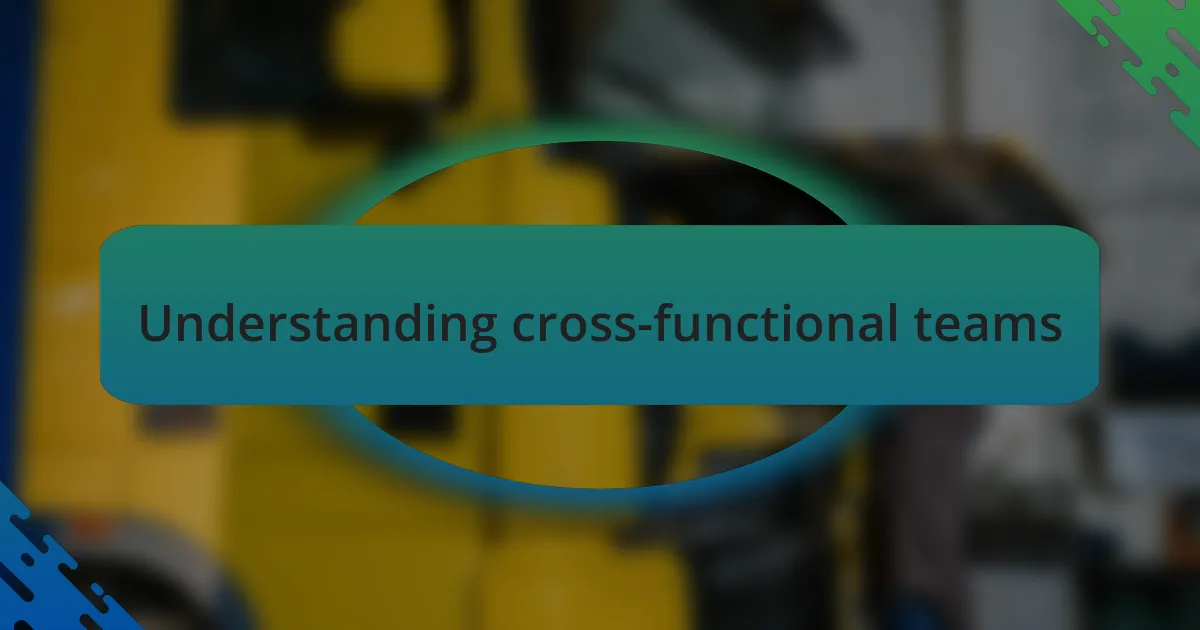
Understanding cross-functional teams
Cross-functional teams bring together individuals from various disciplines, allowing for a diverse blend of skills and perspectives. I remember when I first joined a team that included developers, designers, and marketers. The synergy we created was remarkable; it felt like each person added a unique brushstroke to a larger masterpiece.
One crucial aspect of cross-functional teams is their ability to tackle complex problems more effectively. Have you ever been stuck on a project because every team member looked at it through the same narrow lens? I certainly have, and that’s when I realized the power of bringing different viewpoints to the table. These varied insights often lead to innovative solutions that might not emerge in a more homogenous group.
Moreover, working in such environments fosters a culture of collaboration and open communication. There was a time when a seemingly simple feature required input from various members. Instead of going back and forth through emails, we sat in a room together, brainstorming and building on each other’s ideas. That experience not only drove the project forward but also created a sense of camaraderie that made the whole process enjoyable.
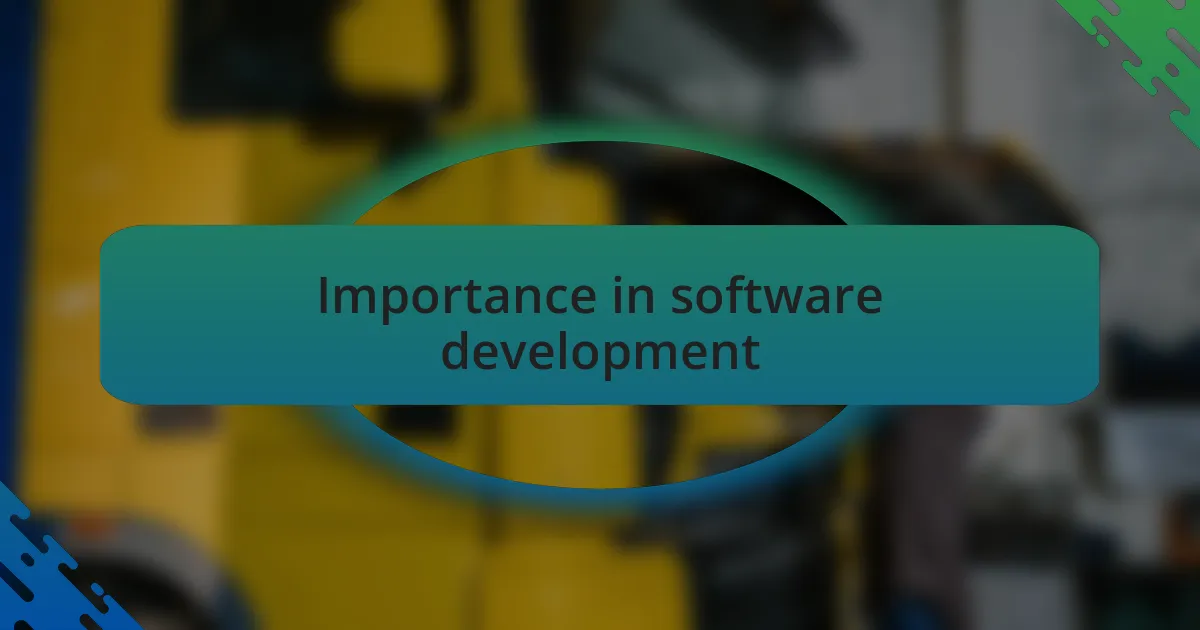
Importance in software development
The significance of cross-functional teams in software development cannot be overstated. In my experience, these teams accelerate project timelines by minimizing delays caused by handoffs between departments. Have you ever felt the frustration of waiting for someone else to finish their part before you could even start? In a cross-functional setup, that waiting time diminishes, enabling us to move faster and stay aligned on goals.
Another essential benefit is the enhancement of product quality through diverse perspectives. I recall a project where initial designs didn’t resonate with our target audience. If it weren’t for the input of our content writer’s insights, we wouldn’t have pivoted to a more user-centric approach. This collaboration with different specialists not only elevated the product but also made me appreciate the value of incorporating various skill sets, turning individual strengths into collective success.
Lastly, fostering an environment where team members feel empowered to contribute their ideas leads to a more engaged workforce. I once participated in a brainstorming session where everyone’s input was heard, and it was invigorating to see how an idea I had sparked a creative leap from a teammate. When people feel valued, it translates to higher morale and productivity, ultimately benefiting the entire development process. Isn’t it amazing how much potential resides within a unified group working towards a common vision?
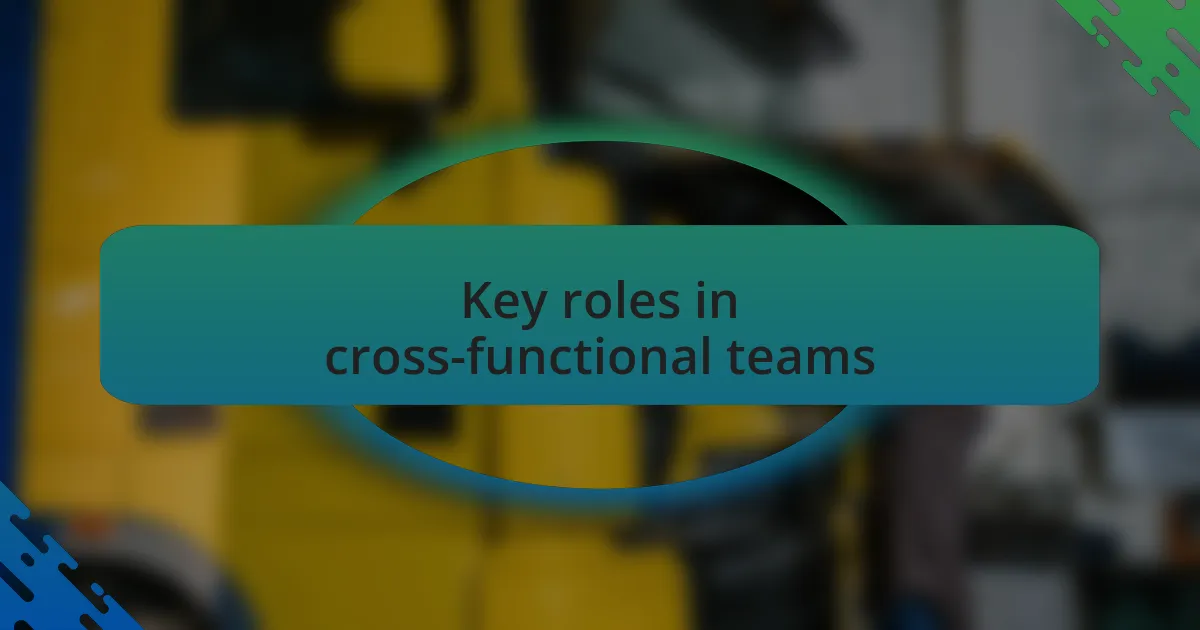
Key roles in cross-functional teams
In cross-functional teams, clearly defined roles help harness each member’s expertise effectively. For instance, there’s usually a Product Owner who prioritizes tasks and orchestrates the team’s efforts. I’ve observed how vital this role is during Scrum meetings, where the Product Owner’s vision keeps everyone aligned. Have you ever felt lost in the details of a project? That’s where their guidance truly shines, steering the ship in the right direction.
Another key role is the Scrum Master, who facilitates communication and removes obstacles. I remember a particularly intense sprint where team dynamics were strained, and the Scrum Master stepped in to mediate. It was like having a coach who not only understood the technical needs but also the emotional climate of the team. This support creates a safe space for everyone to voice concerns, leading to greater collaboration and fewer misunderstandings.
Lastly, let’s not forget about developers and designers, who bring ideas to life and shape user experiences. One time, I watched as a developer worked closely with a designer to tweak an interface based on user feedback they gathered together. It was awe-inspiring to see their back-and-forth exchange transform a basic concept into something intuitive and engaging. Have you seen how impactful this collaboration can be? It’s a stellar reminder of how each role interconnects to create a cohesive product.
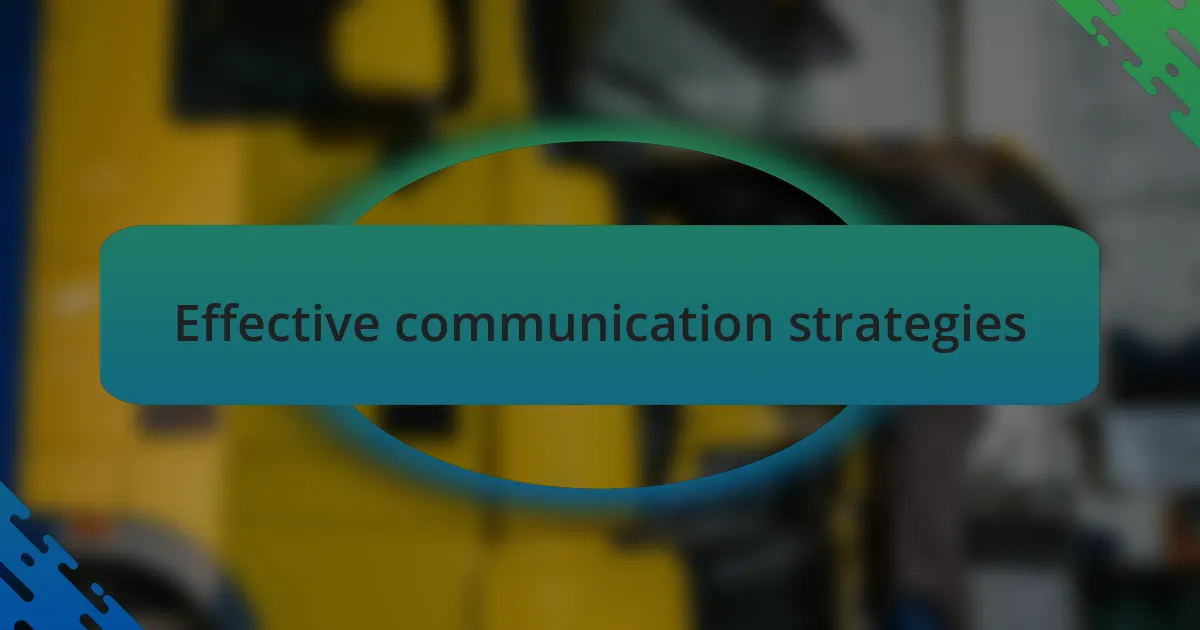
Effective communication strategies
Open channels of communication are the lifeblood of any cross-functional team. I recall a project where we implemented daily stand-ups, which were initially met with skepticism. However, the change was palpable; it fostered a rhythm where team members felt more comfortable sharing updates and challenges. Isn’t it amazing how a small shift in routine can lead to significant improvements in understanding and collaboration?
Another strategy I’ve found effective is leveraging digital tools for transparency. During one project, we used a shared platform where everyone could update their progress. It not only kept everyone on the same page but also highlighted when someone needed help. Have you ever experienced that moment when a simple comment sparked a solution? I have, and it reinforced the idea that visibility encourages teamwork.
Lastly, I believe in the power of active listening. In a recent brainstorming session, I made it a point to encourage quieter team members to share their thoughts. The insights that emerged were so incredibly valuable. It’s a reminder that every voice matters—how often do we overlook great ideas just because we’re talking over each other? Prioritizing this kind of interaction builds trust and unlocks the team’s full potential.
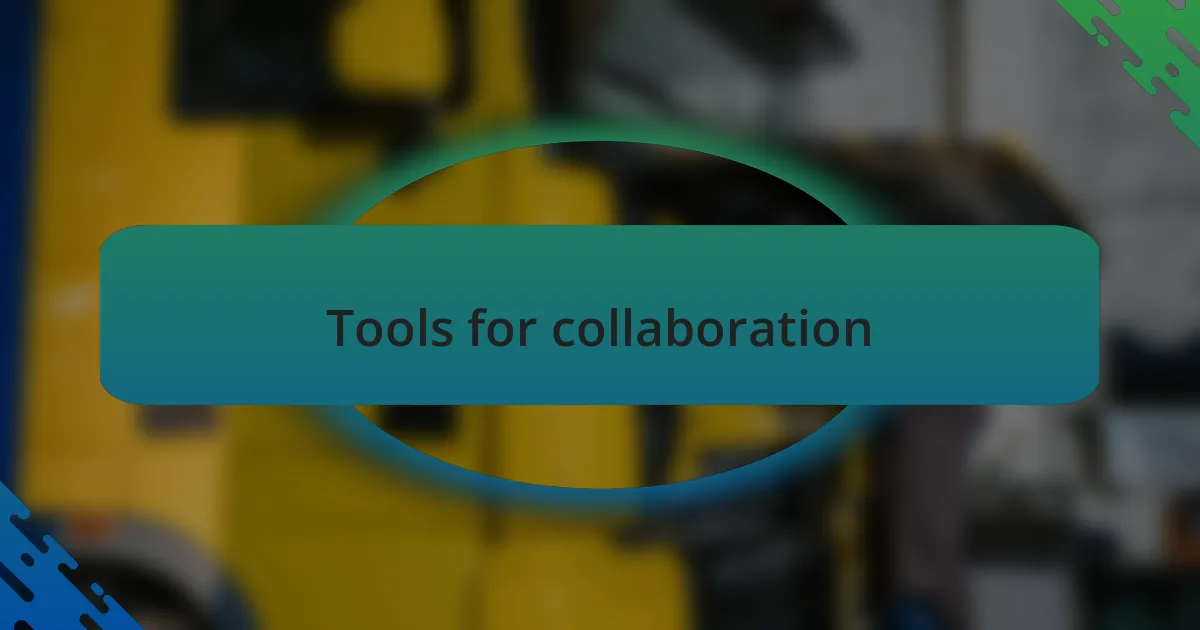
Tools for collaboration
Tools for collaboration are essential in bridging the gaps between team members from different specialties. In my experience, using platforms like Slack has transformed how we communicate. I vividly remember a project where, instead of endless email chains, we created dedicated channels for discussions. The result? Conversations flowed seamlessly, and it felt like I was right there with my colleagues, even when we were miles apart. Isn’t it fascinating how technology can create such a sense of presence?
Another tool that I’ve found incredibly useful is Trello, especially for project management. I recall a particularly complex project where we had multiple overlapping tasks across departments. Trello allowed us to visualize our workflow. Each team member could see what others were working on, which led to organic conversations about overlapping responsibilities. Have you ever noticed how clarity can pave the way for smoother interactions? That’s exactly what happened for us—everyone became more accountable.
I can’t overlook the importance of video conferencing tools in fostering genuine connections. During our last team retreat, we used Zoom for virtual brainstorming sessions. There was something so energizing about being able to see each other’s reactions and body language, even from a distance. Those moments of shared laughter and spontaneous suggestions brought us closer together. Do you ever feel a difference in team spirit when you can see your teammates? I certainly do, and it reinforces the notion that visual interaction can elevate collaboration to a whole new level.
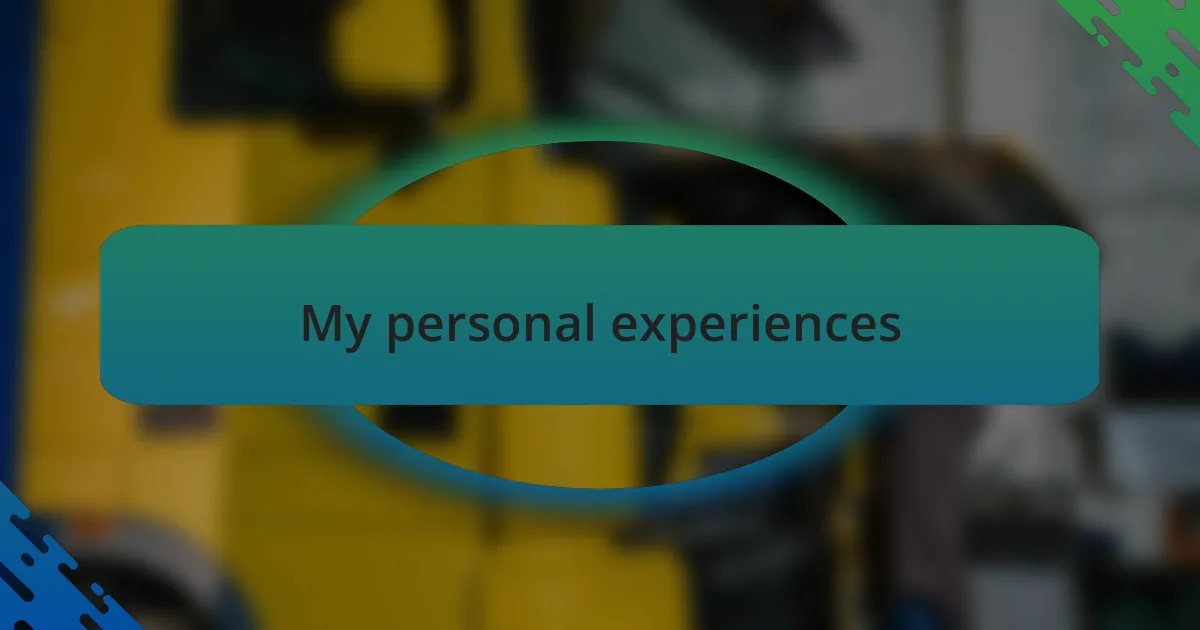
My personal experiences
Throughout my journey in software development, I’ve had the chance to work with professionals from various disciplines. One standout experience was during a product launch where I collaborated closely with designers and quality assurance testers. We held daily stand-ups that felt less like routine meetings and more like a daily catalyst for innovation. It was electrifying to see our ideas evolve through collective effort—hasn’t collaboration always sparked the best solutions for you too?
A particularly memorable moment arose during a cross-functional workshop where we struggled to align our visions for the user interface. I remember feeling initial frustration, as our perspectives seemed miles apart. However, as we shared our insights and experiences, the atmosphere shifted. Suddenly, our differences became our greatest asset, leading to a design solution that embraced all viewpoints. That experience taught me that discomfort in collaboration can sometimes be the precursor to breakthroughs; what’s been your experience with navigating those tricky conversations?
On a different note, I also learned the impact of a strong team culture while working with a diverse group on a software development project. We carved out time for informal gatherings, virtual coffee breaks, and even some light-hearted competitions. Those moments not only broke the ice but also fostered a sense of belonging and trust. I found that when team members feel valued and connected, the collaboration flourishes—have you ever noticed how much smoother the workflow becomes when everyone feels included?
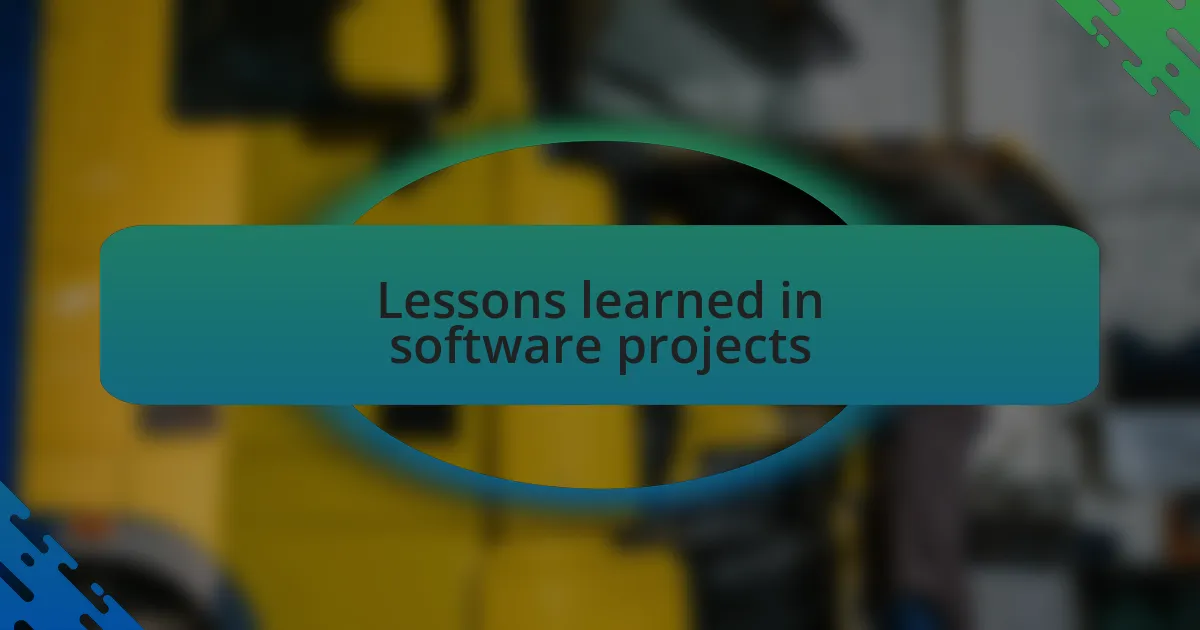
Lessons learned in software projects
In one project, we encountered a critical setback when a key feature failed during testing phase. My heart sank as we reviewed the situation, but it became an invaluable lesson in the importance of early testing. By implementing more frequent checks throughout the development cycle, we not only mitigated risks but also improved the overall quality of our work—how have you adjusted your processes after facing similar challenges?
There was another instance where miscommunication led to a significant delay. I remember the frustration of deciphering what our stakeholders truly wanted versus what we assumed they needed. This experience underscored the necessity of clear documentation and regular check-ins. Establishing a shared understanding at the outset is crucial—has there been a time when clarity transformed your project’s direction?
Reflecting on team dynamics, I’ve realized the power of inviting feedback, both positive and negative. Early in my career, I hesitated to voice my concerns during meetings. Over time, I learned that constructive criticism was a vital component of our growth. This openness not only improved our project outcomes but also strengthened our relationships. Have you found that fostering such an environment has brought about significant changes in your team?